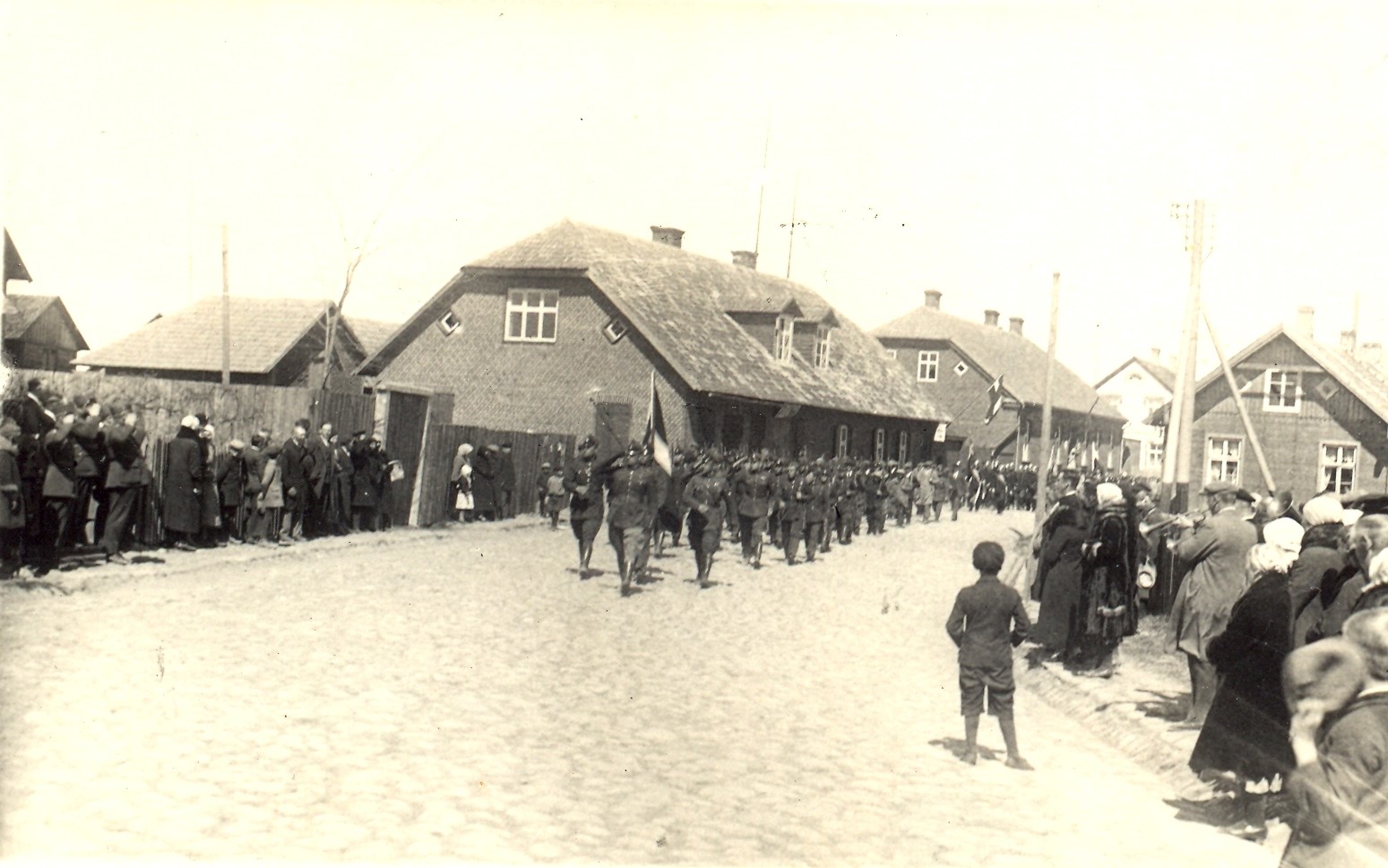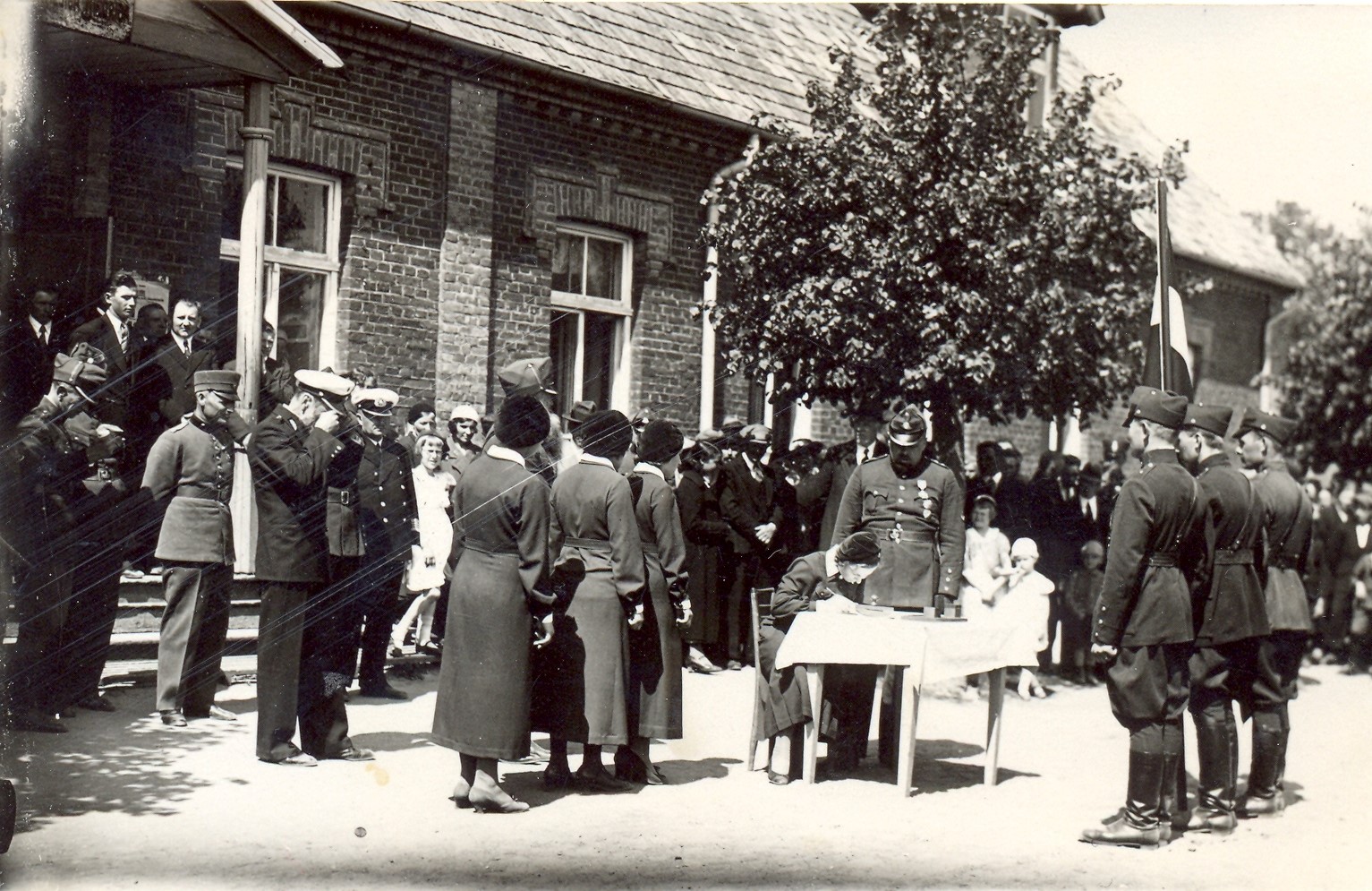During the span between two World Wars there were many strong half-military organisations throughout Europe. The new eastern countries of the Baltic Region were not an exception. In Finland, Estonia, Lithuania, Poland and Latvia there were such influential large formations. The Ranger organisation was the largest social organisation in Latvia that took active part in military, political and ideological fields. The Rangers are still remembered as a symbol of love to fatherland and independence and as a symbol of Latvian identity.
The formation of the Ranger organisation started in 1919 during the fight for freedom.
Their task was to help the national army to provide the protection of the flanks against the red partisans, bermont-groups and to fight the criminal elements. When the state of war ceased to exist, in 1921 the service was abolished and the Rangers became a voluntary organisation where members that were loyal to the country were admitted.
The unit of the organisation was a department of the Rangers that were tied to the district or inhabited area. The units were organized in companies and battalions that formed a protection squadron within a definite territory. There were 19 squadrons in Latvia all together.
The Rangers were a privileged organisation because only the Rangers had the right to carry out the duties of the police. They also had the right to have firearms and to use them should such necessity occurred. On being admitted to the organisation, each and every member gave an oath to protect the independence of Latvia and its democratic life. The moto of the organisation was: All to Latvia!
The Rangers were also involved into the cultural life mainly in the country. The work was voluntary, though. It was not included into the main responsibilities of the Rangers.*
*The history of the 20th century of Latvia, volume II. Independent countries. 1918-1940. R., 2003
The Limbazu Vestnesis of May 29, 1936:
At Salacgriva town, an organisation of Young Rangers was established and consecrated as a branch of the Rangers of Salacgriva on Sunday, May the 24th. The Young Rangers gave their oath. The consecration took place in Lielsalaca Lutheran Church at 10:30 a.m. After the ceremony, there was a parade of the Rangers and seamen as well as dinner and a presentation.
The Limbazu Vestnesis of June 5, 1936:
The motorboat Uzticiba
As we informed our readers, an organisation of Young Rangers was established and consecrated as a branch of the Rangers of Salacgriva on Sunday, May the 24th. The new group received a beautiful motorboat from its patron Robert Berzins. After the oath had been signed the Young Rangers and their guests arrived at the riverbank where the new boat was and its consecration took place. The consecration was performed by the colonel Mr. Zalitis when a bottle of wine was broken on the front of the boat and the name Uzticiba was given. The consecration ceremony was followed by a parade of seamen. The new sea ranger group went to sea. All the ships and motorboats that were present in Salacgriva port at that time followed the new boat and returned to the port only after a couple of hours.
The Limbazu Vestnesis of January 10, 1936:
The Christmas Party for the children from the poor families on January 5, on Sunday at Salacgriva Society House was organised by the Rangers and Female Rangers as well as well as the members of the small squadron and fishermen of the Salaca. Many children from the surrounding area arrived to the party. The Santa Clause with his assistants the dwarfs arrived to see the children and gave them the presents. First the presents donated by the Rangers to the children of the town and we must say that they were really generous. The poor inhabitants of the town were really grateful to receive those. Then the presents were given to the small squadron and then to the new generation of the fishermen.
When the bags and baskets of Santa Clause were empty then the merry children dances and games began. They went on for hours and when everybody left they were in a really elated mood.
The Limbazi Vestnesis of December 13, 1935.
The evening performance of the Rangers:
The numerous group of Rangers gathered at Salacgriva Society House on Sunday evening. There also were some guests invited to the dining. There you could see almost all the intelligent part of the society of Salacgriva. There are really very few social workers that are not the participants of the Rangers.
The dining party was opened by the head of the department Mr. Blumbergs. After that the agriculturist Mr. Kalnins presented his work on cattle breeding. Finally the Rangers sat at the well-laid table for tea. During the meal the ranger A. Ozols gave a beautiful speech where he compared their dining party to the one of their forefathers. The Female Rangers presented the play written by A. Brigadere Caukstenes. It was well-staged by the head of the head of the squad of the Rangers Mrs. S. Roska. The evening closed with dances.














